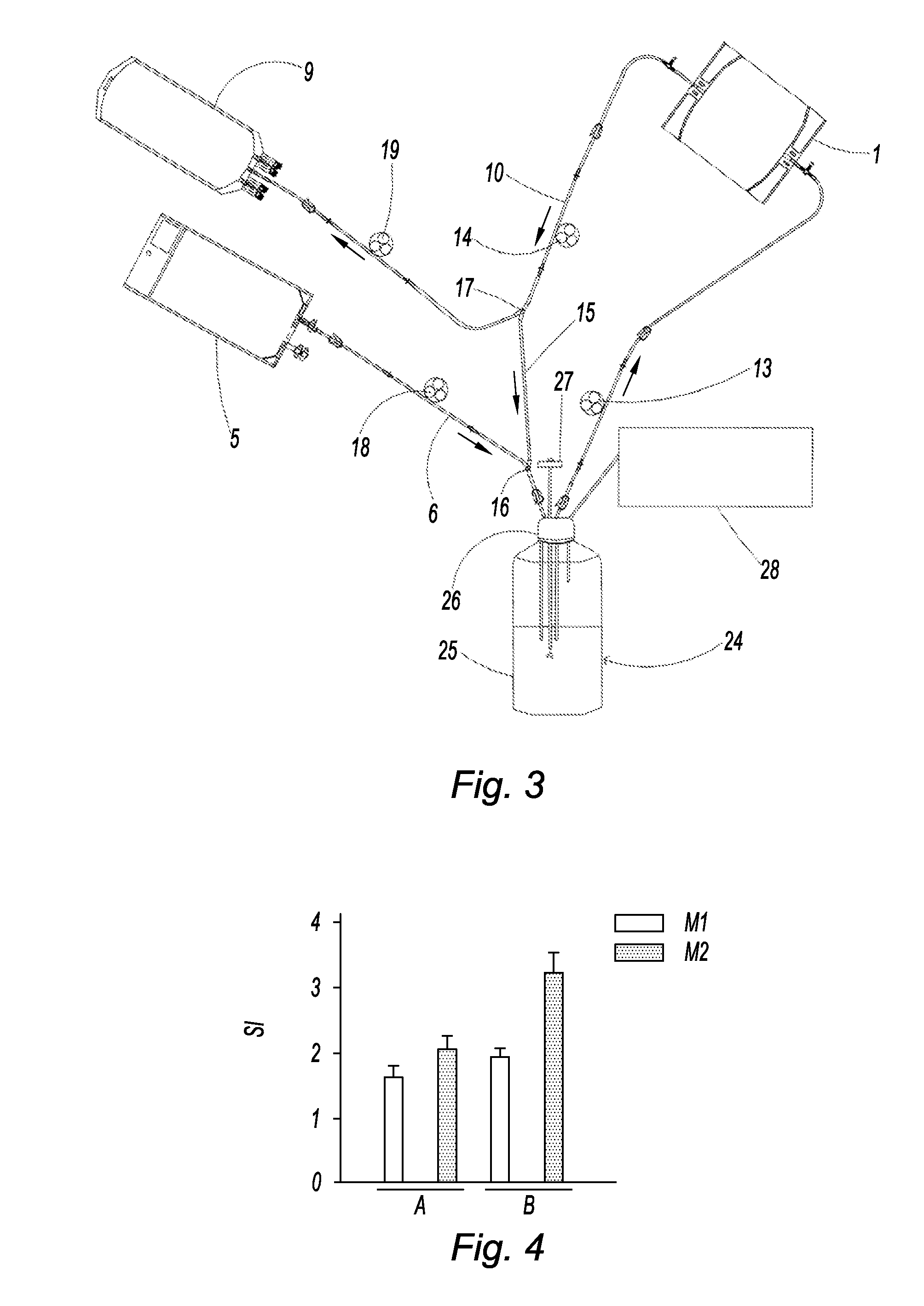Process for preserving insulin-secreting cells intended to be transplanted in a patient
a technology for preserving insulin secreting cells and patients, applied in the field of cell therapy for diabetes, can solve the problems of insufficient media for obtaining an acceptable survival rate of islets, loss of 40 to 60% of islets, and insufficient risk of viral or bacterial contamination of islets, so as to reduce the risk of bacterial and viral contamination
- Summary
- Abstract
- Description
- Claims
- Application Information
AI Technical Summary
Benefits of technology
Problems solved by technology
Method used
Image
Examples
example 1
[0094]Pancreatic islets were isolated and preserved by regular periodic renewal of the culture medium. Air circulation associated with periodic renewal of the medium (¼ of the volume per hour) was envisaged. The pouches used are on the order of 400 cm2, i.e. similar to those to be used in clinical practice.
[0095]The tests were performed on two different islet preparations, the first (Pouch 1) with a mediocre islet purity of 30%, and the second (Pouch 2) with a very high purity of 90%. The partial oxygen pressures (PpO2) are greater in the pouches than in the control dishes. The results are presented in table 1.
TABLE 1Control 1Pouch 1Control 2Pouch 2Purity30%30%90%90%PpO2 (mmHg)139151141151
[0096]The percentage of islet recovery was improved in the pouches; it was on the order of 20% greater than that obtained in the control dishes. It was equivalent in the mediocre preparation where the loss of islets is normally greater than in the purer preparations.
example 2
[0097]In this example, 15,000 islets are placed in a culture dish with 30 mL of medium. Two series of preservation tests were performed, one control without renewal of culture medium (series A), and the other with renewal of the culture medium (series B).
[0098]In addition, two culture media were tested: the culture medium M1 including the CMRL medium (In Vitrogen) supplemented with human albumin, and the culture medium M2 including the modified CMRL base medium (Cambrex) supplemented with AB serum and Stem Ease® (Abcys). The renewal was performed by renewing 15 mL of medium every 2 hours for 14 hours (at 2 hours, 4 hours, 6 hours, 8 hours, 10 hours and 14 hours after isolation). The evaluation was performed at 18 hours.
[0099]The criteria evaluated were the following:[0100]the number of islet equivalents (IE) per islet count after staining with dithizone (FIG. 8),
[0101]the physiology of the islets by determining the amount (μIU / 40 IE) of insulin (FIG. 7), the insulin secretion level ...
PUM
 Login to View More
Login to View More Abstract
Description
Claims
Application Information
 Login to View More
Login to View More - R&D
- Intellectual Property
- Life Sciences
- Materials
- Tech Scout
- Unparalleled Data Quality
- Higher Quality Content
- 60% Fewer Hallucinations
Browse by: Latest US Patents, China's latest patents, Technical Efficacy Thesaurus, Application Domain, Technology Topic, Popular Technical Reports.
© 2025 PatSnap. All rights reserved.Legal|Privacy policy|Modern Slavery Act Transparency Statement|Sitemap|About US| Contact US: help@patsnap.com



